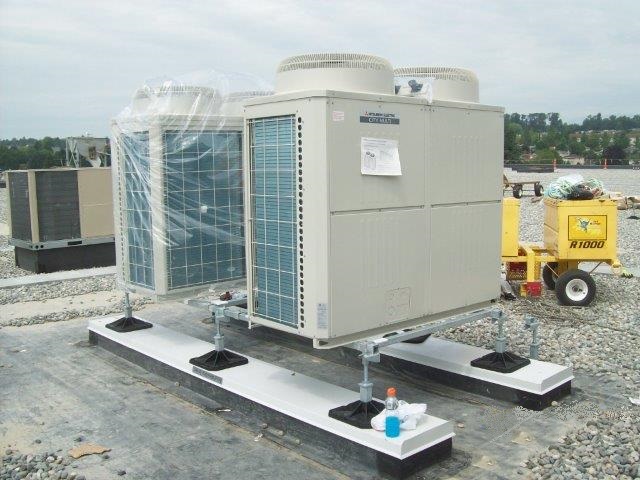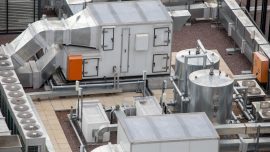
How to Optimize Cooling And Heating for Multi-Family Buildings
As a property manager or owner of multi-family buildings, it is essential to maintain the comfort and safety of your tenants by ensuring that your building’s cooling and heating systems are running at their optimal performance.
Even subtle temperature variations can affect tenant turnover, satisfaction, and increased energy consumption. Fortunately, there are numerous measures you can take to maximize the efficiency of these vital elements while also significantly cutting down on consumption rates within your building. Here we will provide easy tips for optimizing the cooling and heating in multi-family dwellings—saving you time and money!
Identify the Cooling and Heating Needs of the Building and Any Potential Challenges That Come With It
Correctly identifying the commercial HVAC needs of a building is essential to maintain its operational efficiency and comfort. From office buildings to commercial warehouses, climate control plays a significant role in defining the effectiveness of any commercial HVAC services.
However, potential challenges that arise from this also need to be considered. Everything from adequately sizing systems for optimal cooling and heating performance to improving energy efficiency can prevent costly repairs or replacements down the line. Commercial HVAC technicians must take the time required before installation and maintenance to address these needs properly.
Consider Investing in a Zoning System to Provide Individualized Heating and Cooling for Each Unit
Installing a zoning system is an excellent investment for ensuring individualized heating and cooling for each unit. It’s more efficient than a traditional system since it doesn’t try to heat or cool an entire house simultaneously; instead, it targets entirely separate rooms or floors.
This results in better indoor air quality, increased energy savings by reducing waste, and customizable comfort in each unit. It also increases the longevity of your HVAC equipment and helps maintain balanced temperatures throughout the entire home—all of which can have a significant impact on your overall happiness and satisfaction when living in a multi-unit dwelling.
Perform Regular Maintenance on All Heating and Cooling Equipment to Ensure Optimal Performance
Regular maintenance on all heating and cooling equipment is essential for your home’s comfort and efficiency. Bleeding and stressing radiators, cleaning registers, filters, and outdoor units, along with checking pressures in the cooling system, are all necessary tasks that should be completed regularly to maximize the performance of your system.
Neglecting this simple preventative maintenance can lead to an underperforming system and costly repairs, so staying ahead of the curve is essential. Regular maintenance allows you to spot minor problems before they become more significant issues in the future.
Use Energy-Efficient Windows, Doors, and Insulation to Prevent Heat Loss
Investing in energy-efficient windows, doors, and insulation is an effective way to save money on heating bills and protect the environment.
Energy-efficient windows improve airtightness and prevent heat loss due to air leakage. Insulation keeps hot air from escaping through walls and ceilings, while a well-sealed door minimizes heat losses around entryways. Investing in these upgrades won’t only increase your comfort, but it has long-term positive impacts on both your wallet and the environment.
Utilize a Smart Thermostat That Can Be Set Up Remotely
Smart thermostats are one of the latest home comfort and energy savings breakthroughs. With a remote-set-up thermostat, you can remotely adjust your heating or cooling system to fit your needs conveniently and easily.
This means no more wasting energy or creeping utility bills; you can save time and money while keeping your home comfortable even when you’re not there. Just make sure to register your thermostat so you have total control over it—reducing energy costs while giving yourself the ultimate peace of mind.

Install Solar Panels or Other Renewable Energy Sources to Reduce Costs Associated With Powering the Building’s HVAC System
Installing solar panels and other renewable energy sources can significantly impact the cost of powering the building’s HVAC system.
These renewable energy sources are increasingly affordable and compensate for the initial expense over time by reducing reliance on traditional electricity sources. With solar panels, businesses can take advantage of natural resources to provide a steady supply of efficient, reliable, and significantly less costly energy than other forms of power generation.
This makes them an excellent investment in any commercial property’s well-being while minimizing carbon footprint. Businesses can reduce costs associated with their HVAC system while saving money in the long run – making it a win-win situation for budgeting and environmental performance.
Conclusion
It is essential to actively manage the need for cooling and heating in multi-unit buildings. The best way to do this is by assessing the building’s needs, investing in appropriate technology, performing regular maintenance, improving efficiency, and considering renewable energy sources.
Careful consideration of these elements can help ensure the optimal performance of all heating and cooling systems without resulting in any significant changes to operations or unbudgeted costs. Investing in improved equipment now can result in long-term savings.
Therefore, if you want to improve your building’s heating and cooling system performance that positively impacts your bottom line, contact M&T Air Conditioning for professional service and advice. With their skillset and experienced team, you will know that you have made the right decision for your building when seeking to optimize your heating and cooling for multi-family buildings in Canada.







